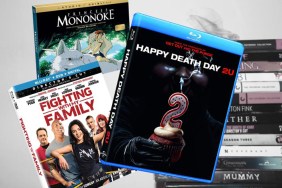The horror genre is one of the oldest and most successful genres in the history of cinema. From the early masters of the form like Fritz Lang and Alfred Hitchcock to slasher film kings Wes Craven and John Carpenter to today’s wildly successful Paranormal Activity franchise, the genre has undergone many changes. As each generation finds a new take on what gets under our skin and keeps us up at night so too has the genre mutated and evolved from its more cerebral beginnings through the guts and gore of the ’80s and back to its roots again today.
While it is impossible to claim any one person is responsible for the genre’s return to form, it would be hard to argue that M. Night Shyamalan didn’t play a key role. His breakthrough 1999 film The Sixth Sense proved to the studios that existential horror was just as viable as jump scares and, in turn, ushered in the era of the chilling horror/thriller film, epitomised by the spree of Hollywood Japanese horror remakes like The Ring and The Grudge in the years that followed.
So, with his latest film Split set for release on Blu-Ray, Digitial and DVD this month we thought we ought to pay tribute to the director’s impact on the genre with our list of 5 Ways M. Night Shyamalan Changed The Horror Genre.
Emotions Over Fear
For those of you too young to remember the gory slashers films of the ’80s and ’90s (seriously, go watch I Know What You Did Last Summer, Scream, Friday The 13th and Nightmare On Elm Street right now) the idea that characters in a horror film ought to be fully fleshed out characters with inner lives and desires may not seem that revolutionary. However, before Shyamalan came along, you would be hard-pressed to cobble together one real character out of the entire cast of a horror film (case in point: tell me the names of any character except the villains from the above-mentioned slasher films).
While Shyamalan would go on to refine this aspect of his films further in Signs (Mel Gibson as the faithless former preacher) and The Village (a whole community that live in fear of “the others”) it was 1999’s The Sixth Sense that truly set off the trend of modern horror thrillers emphasising the inner turmoil of the characters as the true source of horror. Telling the story of a young boy who can communicate with dead people, in the end, it is not the ghosts in the film that are frightening, it is the human actions and unresolved emotional trauma of the characters that keeps them from crossing over.
Finding Monsters In Humanity
Much in the same way Shyamalan focuses the emotional lives of his characters, so too does he often choose to explore the monstrosity of humanity over that of the supernatural. Take his 2000 film Unbreakable for example. The film centres on security guard David Dunn – played again by Bruce Willis – as he discovers he has superpowers and cannot be hurt, after he is the sole survivor of a massive train crash, escaping totally unscathed. He is guided in the quest by Elijah Price – a comic book fanatic with a disorder that makes his bones incredibly fragile – played by Samuel L Jackson.
In the end, Price is revealed to be ‘Mr Glass’ – Dunn’s physical opposite and therefore by comic book logic his arch nemesis – and the one responsible for the train crash, and many other such ‘accidents’. He tells Dunn that he did it all to find someone like him, because, as a child with fragile bones with nothing other than comic books to comfort him, he became obsessed with finding his superhero opposite. It was feelings of isolation and exclusion that drove Price to turn to villainy, and not some supernatural force of evil or stereotypical psychopathy as is often the case in horror films. Here Shyamalan makes a statement about how, in the real world, it is often people who are the monsters. Way ahead of its time, the impact of this film can even be seen outside the horror genre in how Christopher Nolan constructed his Batman films, especially in regards to Heath Ledger’s Joker.

Mind Bending Twists
Twists have always been a trope of the horror genre, with directors going out of their way to plot intriguing reveals of villains or murderers ever since Hitchcock pulled the rug out from under us in Psycho (1960) by revealing the secret of Norman Bates and his mother’s complicated relationship. However, Shyamalan takes the twist to a new level beyond the mere up-ending of the plot. Going back to The Sixth Sense, the reveal at the end that Bruce Willis’ character Dr Malcolm Crowe has been dead all along doesn’t so much change what happens after, as much as it changes what we just saw. More than that though, the twist brings the film’s themes full circle, emphasising once again that it is not the ghosts that we should be afraid of, but our own unresolved emotions. This style of mind-bending twists would go on to inspire a number of imitations such as The Others (2001) and Hide And Seek (2005).

Suspense Over Scares
In the ’90s, the idea of going to see a horror film where you don’t see the monster until the last 20 minutes of the film was unthinkable. The genre at the time was dominated by films relying on jump scares and gory violence to frighten audiences with many of them even opening with a murder scene before even giving the audience the context. Shyamalan changed all that, proving that what you don’t see can be much scarier than what you do see.
His 2002 film Signs is the perfect example of this, as it subverts the classic alien invasion story line into a taut emotional thriller full of suspense. Following Pennsylvania farming family the Hesses as they deal with a global alien invasion, the first hundred minutes of the film, before the aliens are revealed, are some of the most masterfully suspenseful scenes in modern cinema. Shyamalan is, in fact, so good at making us fear what we don’t see, when we finally do see the aliens we can’t help but be a little let down (not least because of how far CGI had yet to come at the time), but that doesn’t matter. At the end of the day, the film is not about what is revealed but what was experienced. And while such a notion has been at the heart of many an indie horror or arthouse thriller before Shyamalan, he brought such a post-modern perspective into the mainstream.

–
Split is out now on Blu-Ray, Digital and DVD.






